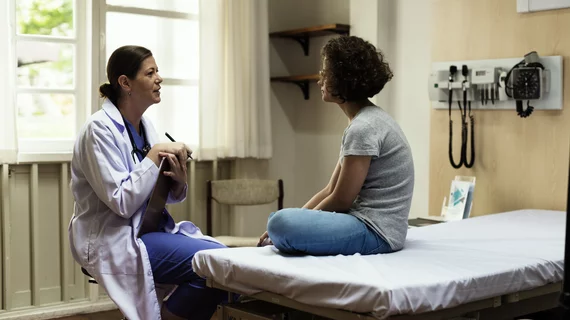With domestic violence injuries increasing, radiologists must watch for these patterns
Nearly 1 out of every 5 women in the U.S. has experienced intimate partner violence, but radiologists can help stop such abuse by recognizing specific injury patterns, imaging experts reported recently.
Although emergency providers often use screening questions to spot victims, domestic violence remains severely underdiagnosed. Researchers analyzed 11 years’ worth of data to help providers proactively identify fractures that may need further scrutiny.
They pinpointed the finger as the most common site for both violence-related upper extremity fractures and accidental strikes. But the odds of this fracture were 4 times greater in domestic violence cases than falls. Shoulder fractures were also more likely in abuse cases compared to accidental strikes.
Importantly, victims often misreport accidental falls to hide violent actions, the authors noted Oct. 9 in Emergency Radiology. Combined with their findings, rads who spot finger fractures due to falls or shoulder/forearm fractures in women with an unclear history of accidental strikes should discuss domestic violence with emergency physicians.
“By recognizing characteristic injury locations and [taking] unusual injury mechanisms into account, radiologists can facilitate early diagnosis of intimate partner violence and prevent more severe and life-threatening injuries by breaking the cycle of abuse,” Bharti Khurana, with Brigham and Women’s Hospital’s Division of Emergency Radiology, and colleagues added.
The team pored over data from the National Electronic Injury Surveillance System’s All Injury Program spanning 2005-2015. Out of the more than 2.4 million ED visits for upper extremity fractures in women ages 15-54, 50.4% were reported as falls. Additionally, 24.4% were accidental strikes and 1.7% were related to domestic violence.
Khurana and co-authors noted only 2.5%-15% of intimate partner violence victims self-disclose their situation and the COVID-19 pandemic has only worsened things.
“Therefore, it is essential for radiologists to recognize and learn the characteristic injury patterns seen in IPV victims and apply this knowledge to identify those unfortunate victims who are unable to disclose due to multiple barriers in an objective unbiased manner.”
Read the full study here.

